In the world of technology – mobile in hand is inevitable. Nowadays, mobile devices are more popular than laptops or desktops.
Smartphones have become an essential part of life. It carries many personal, financial, and other sensitive information with them.
Smartphones are full of apps, right? Yes. Also, many new enterprises are looking to develop an app for their business, and it’s growing. As the app industry is booming, the security of apps has become a concern for users.
Every business relies on the trust between the customer and the company. If the security becomes weak, the trust becomes weaker.
If the app gets hacked, you will undoubtedly lose the trust of the users which is very difficult to build again. Cybercrimes are evolving the same as the evolution of technology.
So app security is crucial as the cyber world has plenty of security threats. Likewise, many enterprise applications interchange sensitive information that hackers are constantly in search of.
A recent survey says more than 75% of mobile applications fail basic security tests. Therefore app security is not a feature, it is a necessity.
Every app should follow an mobile app security checklist from day one when you start to write the first code for the app. Even a single break-in will give access to get much information about the user to the wrong hands.
So let us go through the checklist for mobile security to keep your application safe and sound for you and your users.
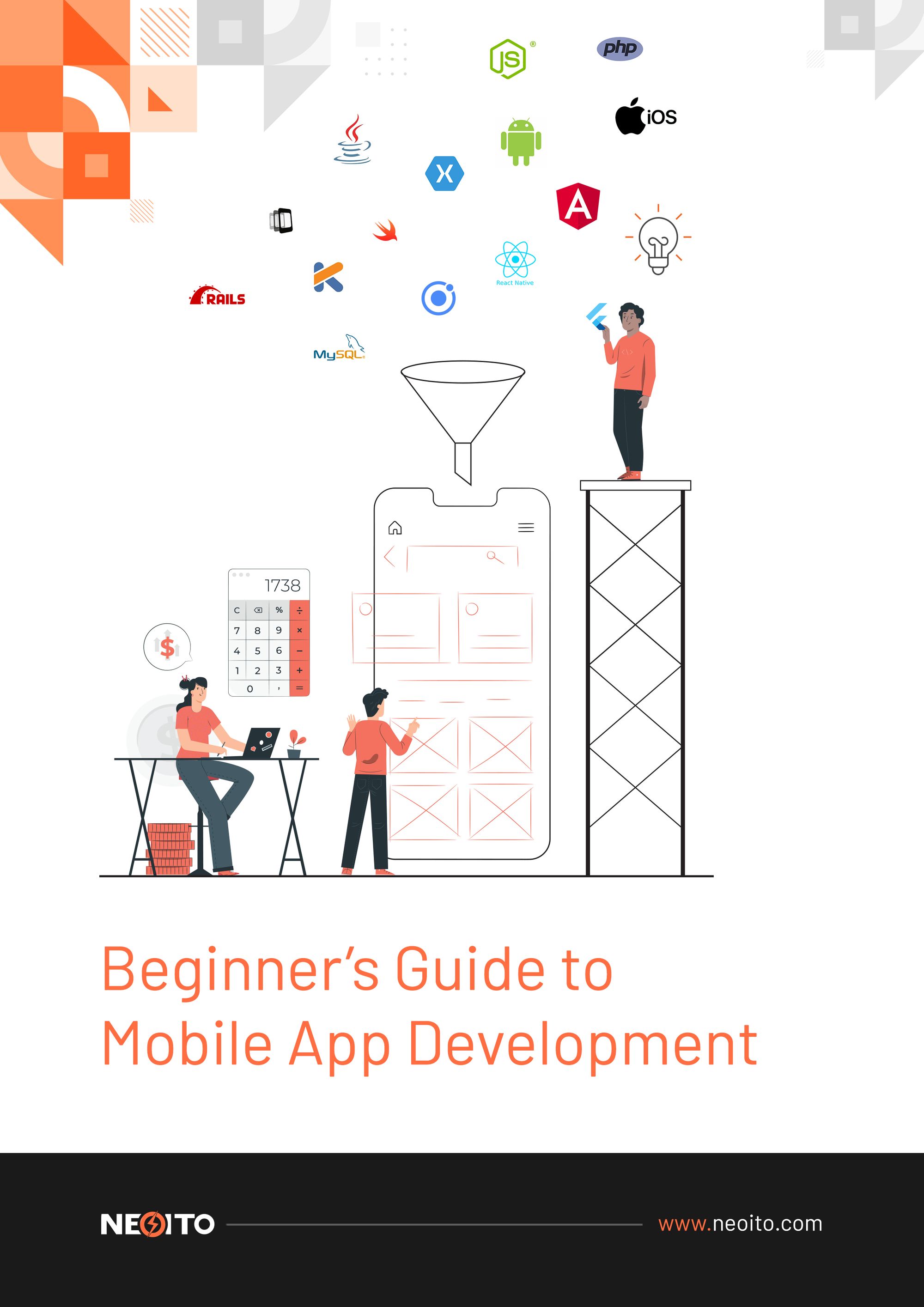
Free Download
A Complete Guide to Mobile App Development
What is Application Security?
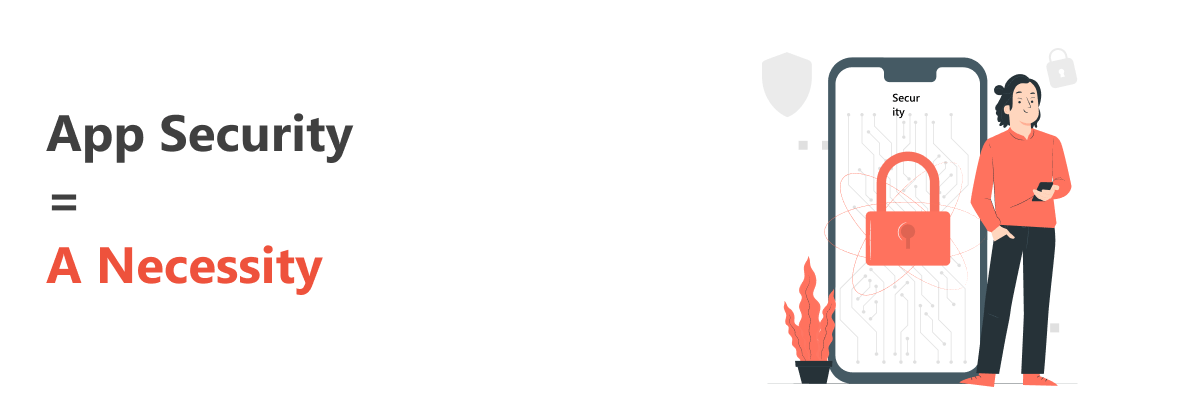
App security includes the practices to secure mobile apps from malware and hackers by enforcing the best security practices possible.
Nowadays, mobile security is mandatory.
Every app should follow an app security checklist before making it online. Because while the app gets hacked, it not only give personal information to the potential frauds but also provides access to banking information, current location, and more.
Effects of Compromised Mobile Security
Shocking revelations from the survey conducted by IBM and ponemon institute revealed that:
-
-
- About 40% of the large companies don’t scan their code for mobile security. Paving the way for a good number of hackers to access the application.
- 50% of the companies building mobile applications have zero budget for securing their apps.
- 33% of the companies never test their apps for security purposes.
-
According to the survey-based in 2014, about 1 billion personal data information was gained by hackers.
And the malware practices are increasing. If you have a very low or weak app security system, it may present a window to the hackers for accessing:
1. Customer information
Providing access to login credentials of any website. Additionally, establishing the current location of the customers to the cybercriminals.
2. Financial information
Hackers can obtain credit or debit card details. Especially when there is no one-time password requirement, the app is at high risk for payment transactions.
3. IP theft
Hackers get the code base of the app for illegally creating the clone of the app. If the app gets more popular, it gets more prone to be cloned.
4. Revenue loss
The primary source of revenue for many applications is paid subscriptions. A weak security system will open the doors for hackers to access premium features leading to revenue loss, especially in gaming and OTT applications.
5. Loss of brand confidence
A user provides their email id, any personal or financial details because they trust the brand. If they get hacked, loss of brand confidence or trust is inevitable. Gaining trust again is not easy, and sometimes you lose to the competitors because of it.
Security Risks for Android and iOSs Apps
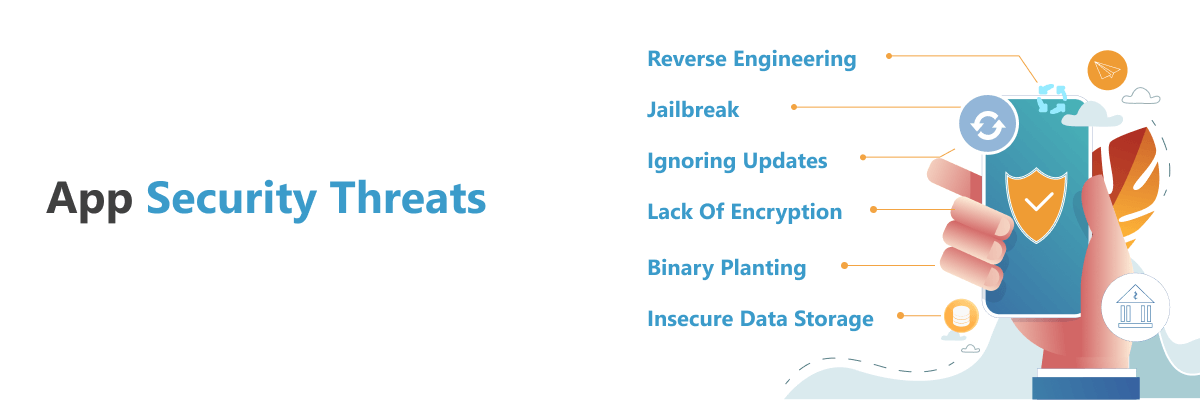
Mobile apps are not developed to serve as antiviruses. Mobile applications are designed to provide better and more smooth functionality to the users.
Installing an antivirus won’t give security for poorly coded apps. There are many risk factors in both Android app and iOS app development. Take a look at how to manage risks in software development.
Security risks in Android apps
-
-
- Reverse engineering
- Insecure platform usage
- Ignoring updates
- Using rooted devices
-
Security risks in iOS apps
-
-
- Jailbreak
- User authentication using Touch ID
- Insecure data storage in the apps
-
Other common security risks
-
-
- Lack of encryption
- Malicious code injection
- Binary planting
- Mobile botnets
-
Mobile App Security Checklist
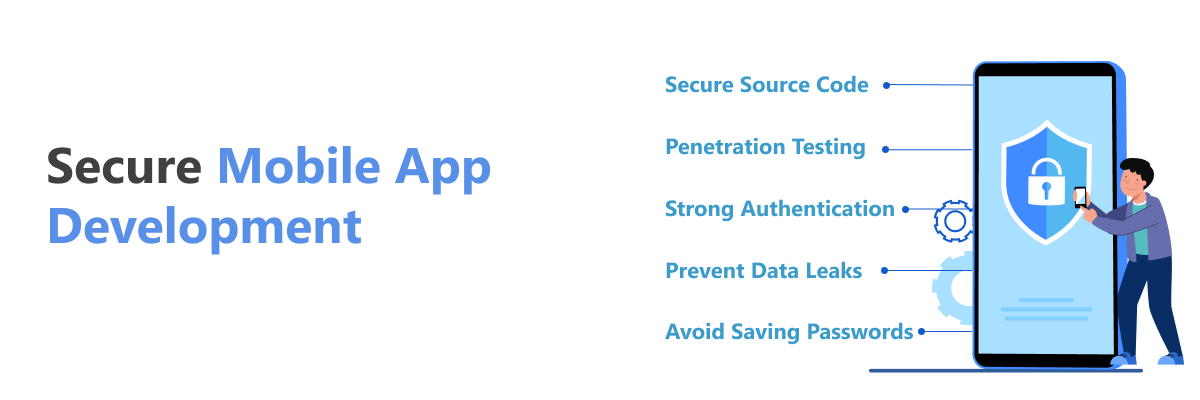
The most important aspect of mobile app security is to ensure the app is risk-free and the personal data provided are safe and sound. To make sure that we need to go through a lot of security checks from day one of the mobile app development processes.
No matter how strong the development process is, there will be bugs or mistakes present in the coding. This can easily lead to hackers penetrating and gaining the data they’re looking for. How to secure your mobile app is a big question.
To ensure improved mobile security, let’s look into the best mobile app security checklist below.
1. Secure the source code
Source code is the fundamental component while programming an app. Nowadays, open-source code is widely used by many app developers.
The open-source code is more dangerous because the hackers can create clone apps easily using the reverse engineering technique with the help of tools available on the internet.
So it’s more important to secure the code.
By using software such as Pro-guard, we can obfuscate the codebase. Obfuscating code means making the code difficult to understand by changing the class, method, and attribute names into meaningless letters or characters.
2. Secure mobile communications
While transferring the data from the user side to the app, there are many possibilities to be hacked. The hacker can play a man-in-the-middle attack over WiFi and cellular networks. It is essential to secure the data while communicating.
Encryption of communication data involves using VPN tunnels, SSL, TLS, and HTTPS communication to secure data while in transit.
3. Use cryptography effectively
Cryptography is one of the most important elements regarding app security. But improper implementation of cryptography will reduce the overall mobile security.
So to ensure the best security using cryptography, you should use the latest APIs. Many popular cryptographies like MD5, MD4, SHA1 are found insecure in rising cybercrimes. Choosing the cryptography tool wisely will lead to enhanced cyber security in your app.
Never forget to test the cryptography manually before releasing the app.
4. Penetration Testing
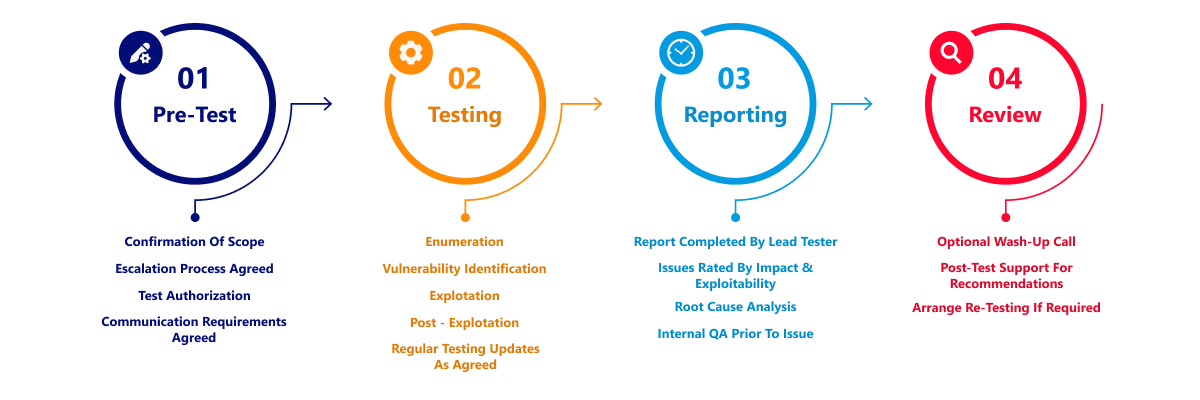
Penetration testing is one effective way to find the flaws from the hacker’s eye. By doing it, we can discover the weakness that the attacker may find and use.
Penetration testing involves:
-
-
- Checking password policies,
- Unencrypted data,
- Permissions to third-party apps,
- No password expiry protocol, and more.
-
It is highly recommended to perform penetration testing at regular intervals to ensure there is no loophole for the hackers to access the data.
5. Enforce Strong Authentication
Implementing strong authentication is the core of cyber security. Using high-level authentication will reduce the risk of unauthorised access and password guessing attacks.
Multi-factor authentication means providing a secret code by SMS, captcha, and accompanying with the password for login or transactions will reduce the risks. The stronger authentication will lead to solid app security.
You can also encourage the user to change the password within six months or a year. For high-security apps, along with the passwords, we can also use biometric authentication like Touch id, retina scan for more security.
You can also execute time of day or location-based login for enhanced app security.
6. Avoid Usage of Personal Devices
To avoid the cost of buying devices, many companies allow employees to use personal devices for coding and testing. This leads to many leakages of codes and data. Many malware transfers from one device to another in this manner.
To avoid this, companies should provide a device where any other apps can’t be installed, or the devices used by the employees should be scanned by a firewall, antivirus, and anti-spam software.
7. Prevent Data Leaks
Users can install any personal apps without establishing the securable data at risk. For that, separating the business apps from personal apps is essential. Also, you can prevent data leaks by,
-
-
- Avoiding copy and paste features.
- Block taking screenshots.
- Watermarking sensitive files.
- Prevent the saving of confidential files on their phone.
-
8. Be Careful while Using Third Party Libraries
Using third-party libraries is very helpful for the development process by speeding up the app release. But it also provides ample room for risks when it comes to mobile security.
Therefore, using fewer third-party libraries will reduce the risk of hacking. Also, test the library before using it in your app.
9. Avoid Saving Passwords
Many apps save the passwords in their device for user convenience so that the user won’t need to enter the passwords every time they log in.
During mobile theft, saved passwords may lead to a lot of difficulties and issues by giving access to all the information available in the app.
To avoid this, developers should avoid saving passwords on mobiles. You can save the passwords in the app server so that the customer can log in from the web server in case the mobile gets lost or any other emergencies.
Read: Flutter Vs. Ionic: Which to Choose For Your Next Mobile App Development Project?
Conclusion
Undoubtedly, mobile app security is of high priority. If you are in a plan to develop an app or is running a software business with an app, then never forget to follow the mobile security checklist to ensure app security to both user and the app.
Users are now aware of mobile security. If your app doesn’t provide the proper security then the app growth will be hindered. So create apps with good security modules and test the apps regularly to strengthen app security.






